In this post, we will see how to force Windows to always boot using Fast Startup or Hybrid Boot. One of the new features of Windows 11/10 is Fast Startup which is also known as Hybrid Boot. We had a look at it a few days back. The work of this feature is to save the current kernel session and device drivers in hiberfil.sys, whose memory is about 4-8 GB or more.
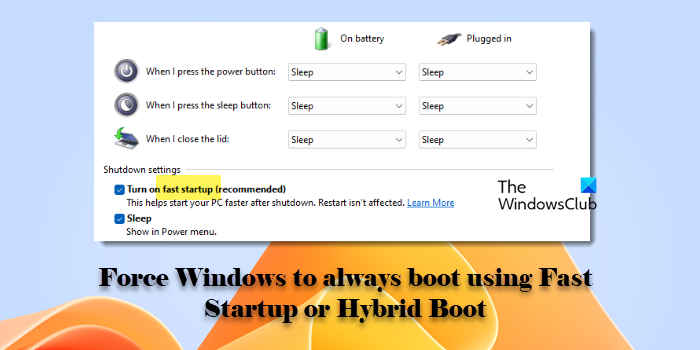
Force Windows to always boot using Fast Startup
Using this concept, Windows can give you about 30-65% fast startup, after shutdown. Hence compared to its earlier versions, Windows 11/10 wins the race in this segment. If you have a motherboard with UEFI, then the Fast Startup will be even faster!
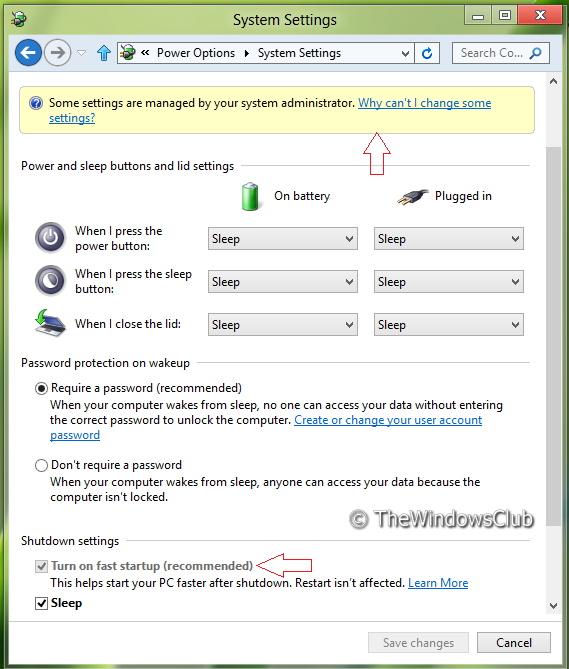
But there are some settings that can be configured to disable the fast startup function. If you are using a multi-user system, it may be possible that some other users may tweak this setting, and you might not be able to enjoy the fast startup. You may also end up wondering why your Windows is booting relatively slowly.
In this article, we’re going to share the trick to lock the tweaking option, so that only you can change the setting for Hybrid Boot. Actually by default “Fast startup” is turned on, but using this way, you can force it to stay on and gray out the settings to be able to turn it off.
You can disable the option to Turn off Hybrid Boot or Fast Startup using GPEDIT or REGEDIT and for Windows 11/10 to always boot using Fast Startup.
1] Disable the option to Turn off Hybrid Boot or Fast Startup using Registry Editor
1. Press the Windows Key + R simultaneously and put regedit in the Run dialog box.
2. Navigate to the following registry key:
HKEY_LOCAL_MACHINE\SOFTWARE\Policies\Microsoft\Windows\System
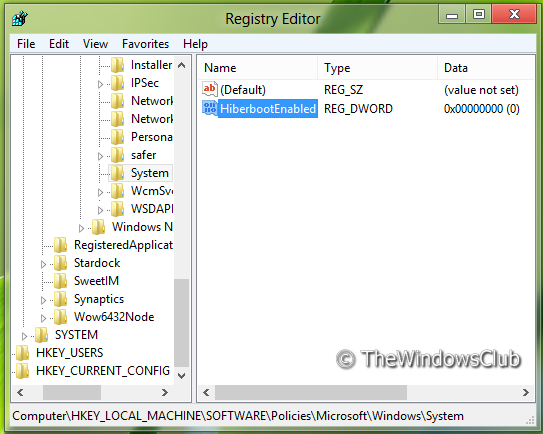
3. Now right-click in the right pane of the window. Create a DWORD value and name it “HiberbootEnabled”.
4. Right-click on the above-created DWORD value, and select Modify. You will get this window:
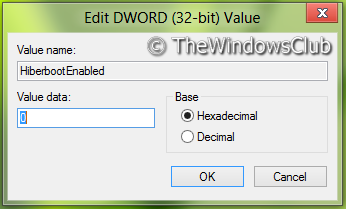
5. Now you can use the following values for the Value data section:
- Do NOT force “Hybrid boot” to be always turned on = ‘0’ (Default Setting)
- Force “Hybrid boot” to be always turned on = ‘1’.
6. Close Registry Editor and reboot to see results.
2] Disable the option to Turn off Hybrid Boot or Fast Startup using Group Policy Editor
This option for using group policy is only available in the Windows 11/10 Pro and Windows 11/10 Enterprise editions.
1. Press Windows Key + R combination and put gpedit.msc in the Run dialog box.
2. In the left pane navigate to:
Computer Configuration -> Administrative Templates -> Control Panel -> Personalization
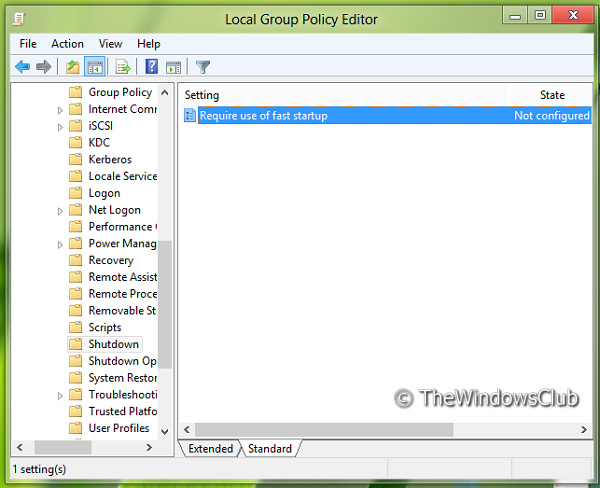
3. Now look in the right pane, you’ll get the policy named Require use of fast startup as shown above.
4. Double-click on this policy to get the window shown below.
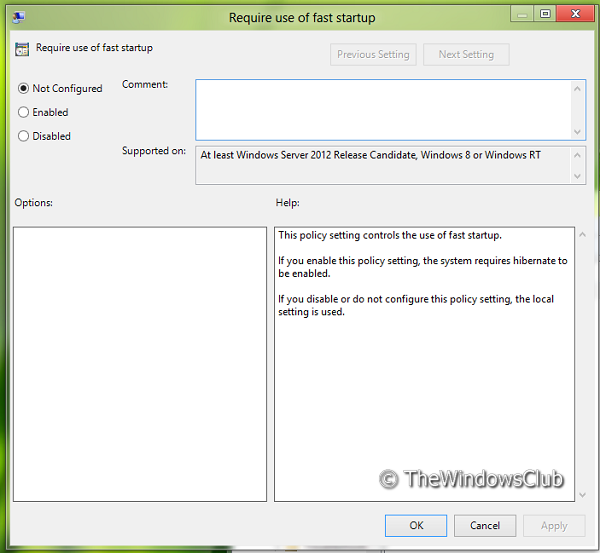
5. Now you can use the following settings:
- Force “Hybrid boot” to be always turned on = Enable
- Do NOT force “Hybrid boot” to be always turned on = Disabled/Not configured (Default Setting)
After making changes click Apply followed by OK.
That’s it. Reboot to see the results.
TIP: This post will show you how to change the Windows Boot Logo.
Is Fastboot good or bad?
Fast Startup can be beneficial for users who prioritize quick boot times and convenience. However, the hibernation file used by Fast Startup can take up significant disk space, especially on systems with limited storage. Having said that, some hardware configurations or drivers may not function properly with Fast Startup, requiring it to be disabled in some cases. Fast Startup can also interfere with the ability to access shared partitions and data if you dual boot with another operating system like Linux.
What is Windows Hybrid Boot?
Fast Startup, also known as Fast Boot or Hybrid Boot, is a feature of the Windows operating system that combines the elements of traditional cold boot with hibernation to offer faster boot times. With faster boot times, the system feels more responsive when starting up from a powered-off state. Hybrid Boot is enabled by default on most Windows 11/10 PCs. You can manage its settings through Control Panel > Power Options > Choose what the power buttons do > Change settings that are currently unavailable > Turn on fast startup (recommended).
Read Next: Check if Windows last boot was from Fast Startup, Full Shutdown, or Hibernate.
Thanks.. Gud tip.. really useful
Yup, be nice to have in Win 10, or whatever they call the next OS after this one bombs. I want a computer, not a smartphone!!!!!! Why don’t they get that??? This looks more like my Droid than Windows!!!
Computer Configuration > Administrative Templates > Control Panel > Personalization (not found Require use of fast startup).
HKEY_LOCAL_MACHINESOFTWAREPoliciesMicrosoftWindowsSystem
Computer Configuration > Administrative Templates > System > Shutdown (Require use of fast startup).
I mistakenly comment below
If I don’t got it in [Local Group Policy Editor] the policy [Require use of fast startup] Because my Windows 8 O.S. is Lite or Modified. How did I make this Policy them?
^^ We’ve written this article while Windows 8.1 Release Preview was on the floor. I guess Microsoft has removed the GPO. You can head on to the registry method only. It also does the same job :)